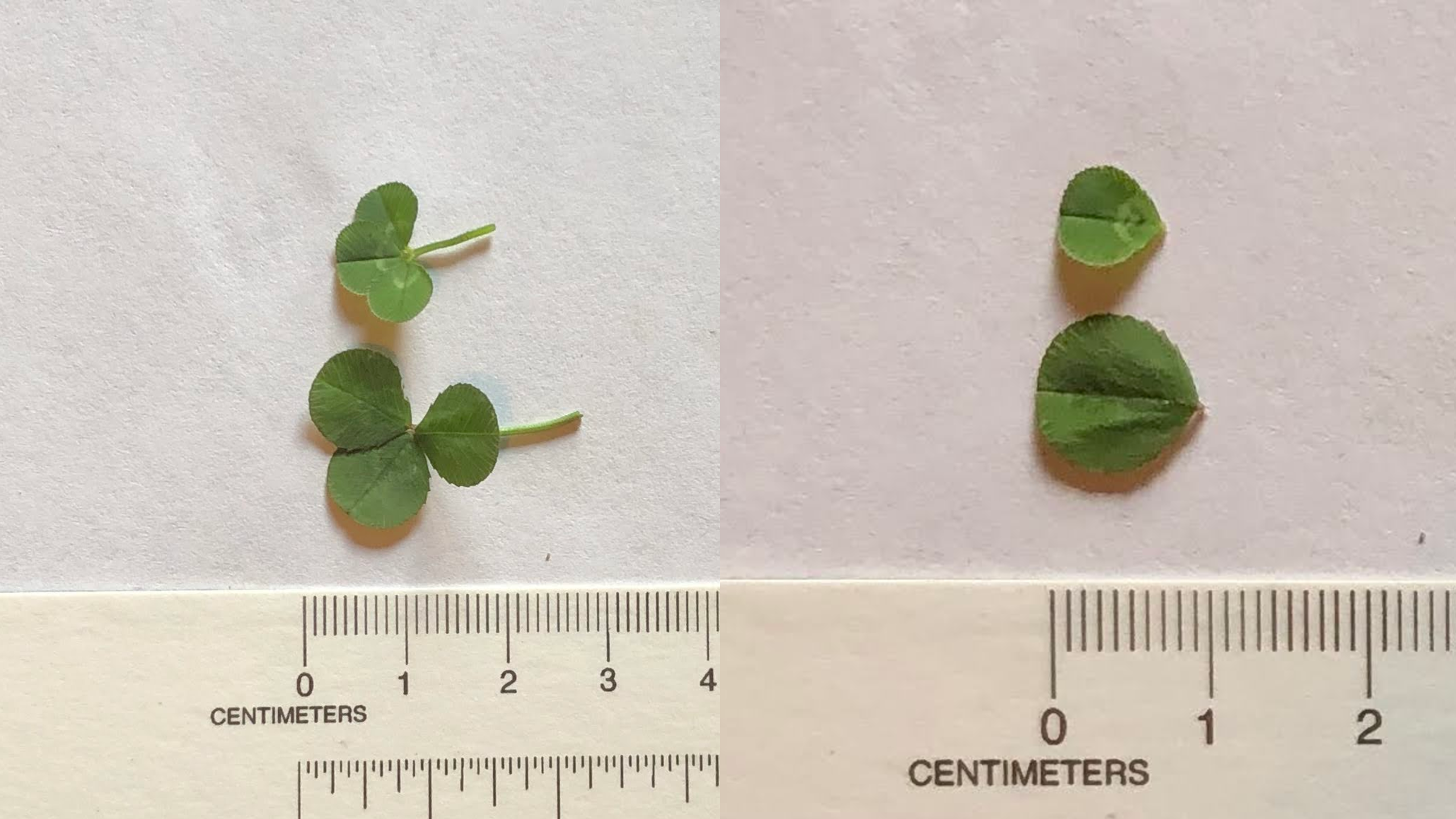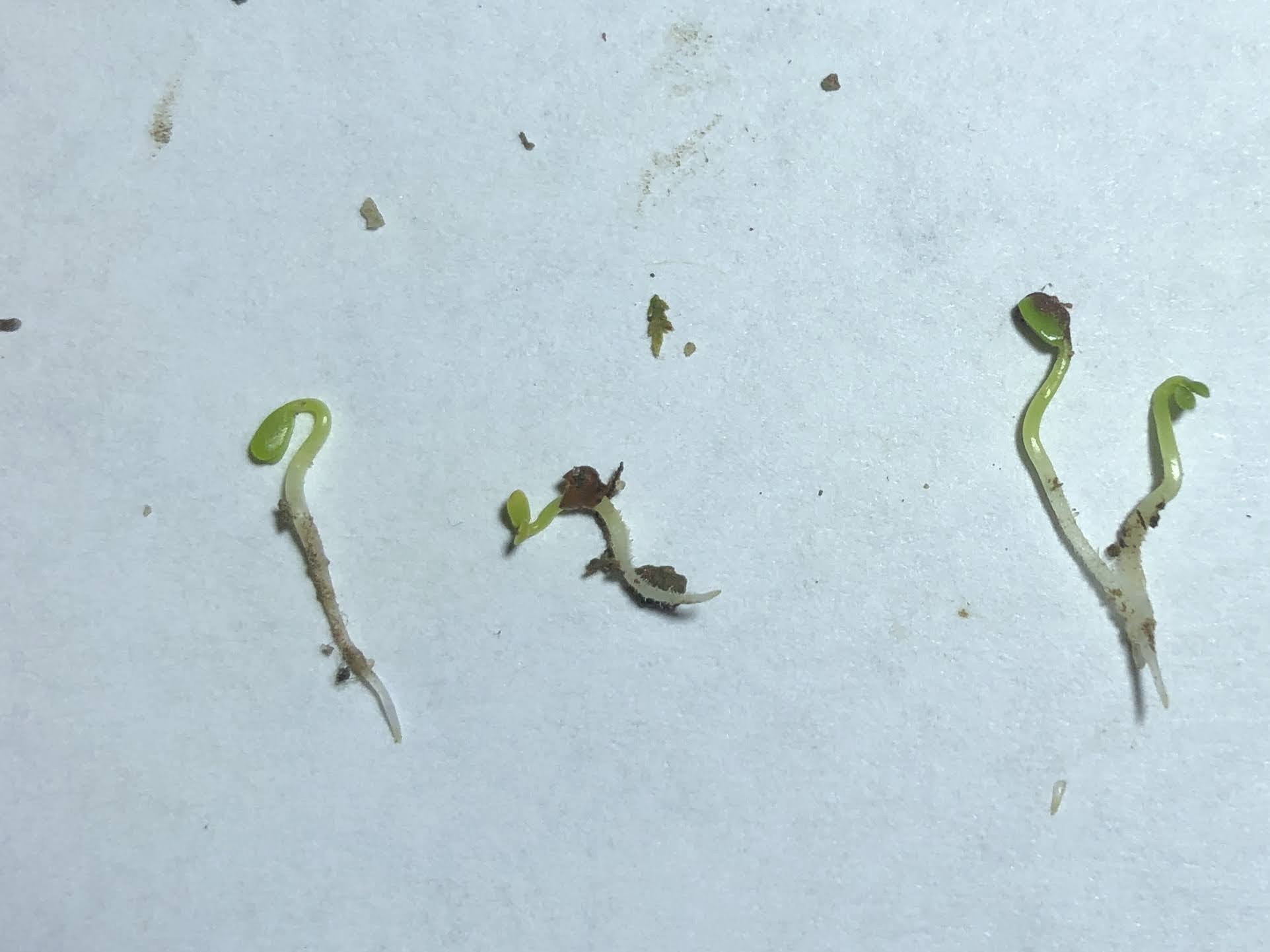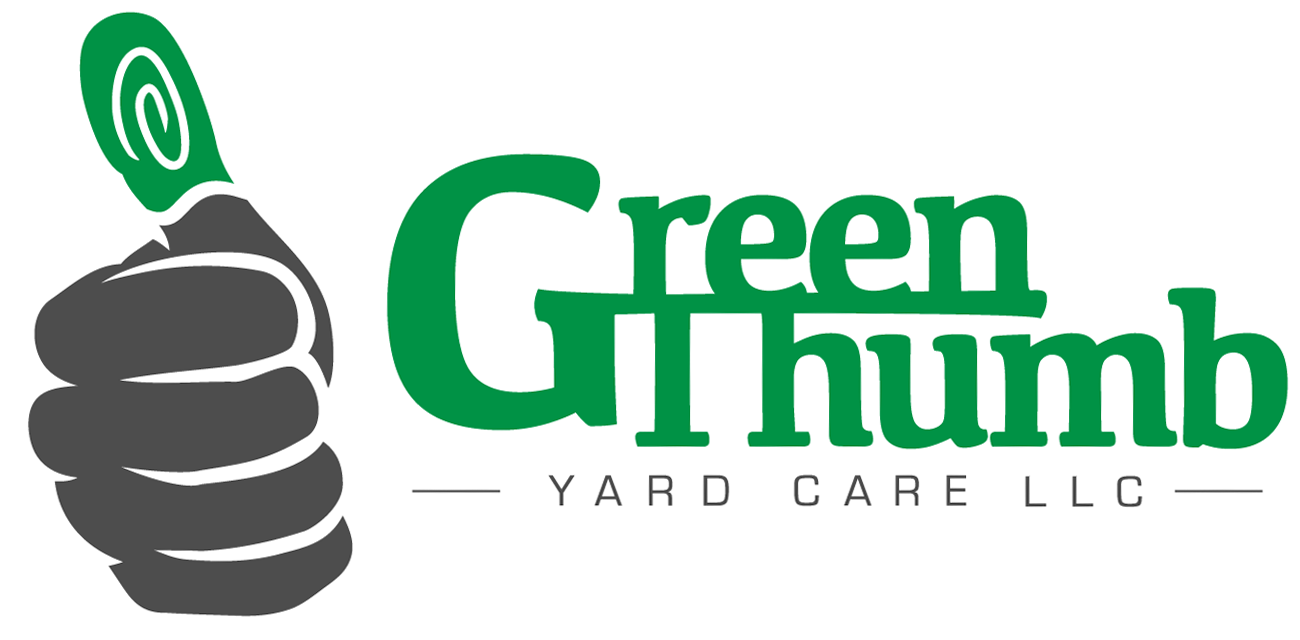Micro Clover Will Help Your Lawn
Like normal clover, micro clover has 3 rounded leaves and is a member of the legume family.
This ground cover was specifically bred for its tiny leaves and low growing habit.
It can be incorporated into an existing lawn or used by itself for a 100% micro clover lawn. Micro clover also makes a great ground cover in between stepping stones and mitigates erosion on steep hillsides.
How is micro clover different from regular clover?
Micro clover is very similar to regular clover but there are a few important differences.
First, micro clover leaves are about 1/3 smaller than regular clover leaves. You can see that a normal clover leaf is about 1cm long. A micro clover leaf is just ver 0.5 cm long.

Micro clover’s flowers are also shorter, smaller, and less prolific than traditional clover flowers.
Why should you consider growing micro clover in your lawn?
Micro clover is beneficial for all lawns. It creates a healthier ecosystem and increases verdure.
Create a healthy ecosystem
Most lawns are a monoculture, i.e. one plant.
There are multiple reasons why a monoculture should be avoided. They tend to deplete the soil of nutrients. They reduce the amount of beneficial insects and wildlife that live in the area. And, they are more susceptible to pests and disease.
Adding micro clover to your lawn increases the biodiversity. It also reduces the negative effects associated with monocultures mentioned above.
Increase verdure
Most homeowners want a deeper greener lawn. Micro clover can help.
Since micro clover is in the legume family, it captures nitrogen in our atmosphere and fixates it in the soil.
Conveniently, grass requires nitrogen as its main nutrient source for growth and color.
So, evenly distributing clover through your lawn will increase the amount of nitrogen available for the grass. That means more growth and deeper green color!
How do I incorporate micro clover into my lawn?
Adding micro clover to your lawn is easy. I recommend adding clover when you aerate and overseed. This is the micro clover that I use.
It is important to add just a little bit!
According to the University of Maryland turfgrass department, your overseeding mix should be no more than 5% micro clover seed by weight.
A lawn normally requires 4 pounds of grass seed per 1000 square feet when overseeding.
Let’s say your lawn is 10,000 square feet. Your overseeding mix should be 40 pounds of grass seed and about 2 pounds of micro clover seed.
40 pounds * 5% = 2 pounds
After overseeding your lawn with the grass seed/micro clover combo, water daily with a sprinkler.
What should I do next?
Micro clover germinates very quickly. You can see its progress below after 72 hours.

It is important to NOT treat your lawn with broadleaf weed killers. If you have a lawn service make sure they know that you want the micro clover to thrive in your lawn.
If you do have other weeds like dandelions, ground plantains, etc. spot spray to reduce damaging the micro clover.
Let’s say that you incorporate micro clover into your lawn and accidentally spread too much. Or, for whatever reason, you regret trying micro clover. Getting rid of it is very easy. Simply treat the lawn with a broadleaf herbicide and the micro clover will disappear.
Now that you know the benefits of micro clover, and how easy it is to reverse, you have no excuse to not try!
Get all of the right tools and read more posts here!
Tools and Materials
*These are Amazon affiliate links. Buy using these links to make your purchases you help us WITHOUT spending any extra money!
